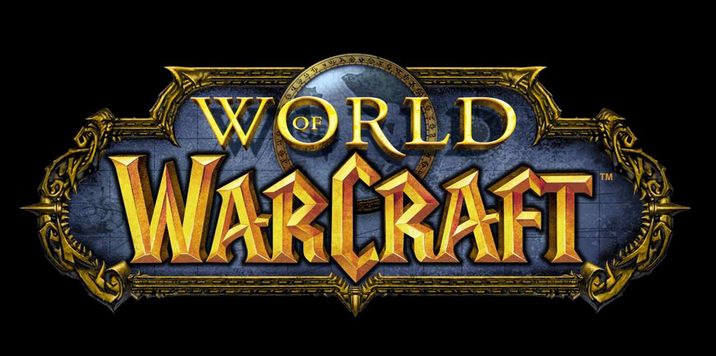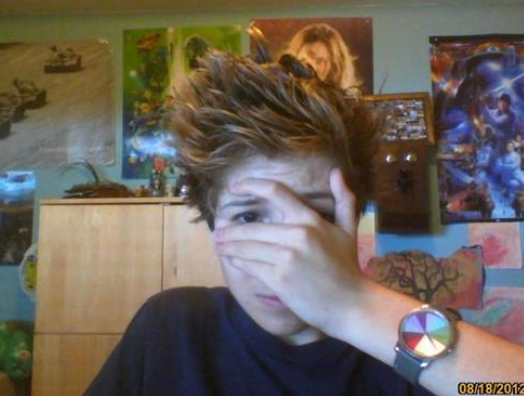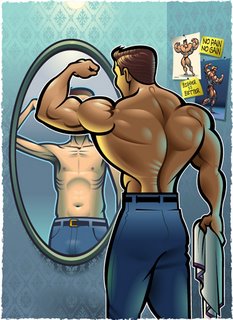 June 7, 2014 This coming week I’m attending the colossal gaming #Gsummit in S.F., a four-figure fee fandango (won in a drawing) that I’m eagerly sweeping my slate for in order to learn from ‘the biggies’ how large scale gaming and gamification can impact behavior change, physical/mental and social-emotional environments, education, imaginative play, and even widespread public health.
June 7, 2014 This coming week I’m attending the colossal gaming #Gsummit in S.F., a four-figure fee fandango (won in a drawing) that I’m eagerly sweeping my slate for in order to learn from ‘the biggies’ how large scale gaming and gamification can impact behavior change, physical/mental and social-emotional environments, education, imaginative play, and even widespread public health.
As one who has experimented with embedding our hands-on experiential media literacy games into the digital realm (and finding their tactile form doesn’t easily ‘translate’ to achieve the ‘aha’ lift and reveal moment pulling back the current of Oz) it’ll be great to get this knowledge bump from neuroscience experts who ‘show and tell’ the power of play in applied science that might be adaptable into the prosocial sphere. Exciting!
A few sessions at G-summit piquing my interest?
How to Create Long-term Change from Short-term Motivation by Dr. BJ Fogg
Gamification and Kids–It’s Not Child’s Play; Persuasion, Motivation, and Behavior
Game on! How Wearable Fitness Tech is Changing Health and Wellness
The Science of When and Why the Rules Don’t (Always) Work
The Science of Fun: 3 Ways Games Make You Happier and Save the World with Nicole Lazzaro who I interviewed about Tilt World, putting emotion into game play all about her eco message and adorable frog fun. (And that’s only a handful…)
 More and more we’re seeing intervention and outreach approaches using light touch gamification specifically applied to public health, many of which I discovered during May’s mental health awareness month. Examples?
More and more we’re seeing intervention and outreach approaches using light touch gamification specifically applied to public health, many of which I discovered during May’s mental health awareness month. Examples?
This new Workout App for the mind (in beta, outreaching to the often ‘unreachable’ boys/young men 14-25) developed by the Inspire Foundation as a “life skills” game uses data from The Brain and Mind Research Institute (University of Sydney) and deploys language of ‘missions’ and ‘workouts’ to remove stigmas of seeking help. Their aim is to “enable young users to tackle their thoughts and attitudes one activity at a time.” (mini-demo here)
Other “gamification” gaining media traction for addressing youth depression (which the World Health Organization cited as an urgent focus among 10-19 year olds) are cognitive science applications for mindfulness and mood like ReliefLink and PersonalZen vying to become the Candy Crush of mental health.
Game Designer Erik N. Martin
Along the same lines of behavior change and public health, the fabulous #YTHLive conference (recap here) was brimming with “gamification” models ranging from sex education to nutrition to psychological outreach, and I’ll be doing a whole story on Nancy Lublin’s Crisis Text Line.org (not gaming, but a much needed 24/7 texting platform already serving nearly 2 million teens via text message).
Today, our interview is with Erik Martin (in red) one of the fabulous YTHLive public health conference’s all-star youth plenary of whipsmart problem-solving young men and women…including Adora Svitak (TED talk teen “What Adults Can Learn From Kids” at far left and scientist Jack Andraka of pancreatic cancer test fame, now tackling eco/oceans and the Xprize, far right!)
I’ll be covering all three of them this summer, but I chose to highlight Erik Martin’s WoW gaming experience FIRST since G-Summit is upon us, and also because Erik is founder of a SuperPAC for better education policies speaking next week June 10, 2014 on a UNICEF/UN panel in NYC to activate change!
 Erik Martin’s personal victory over anorexia in high school and his storytelling of how he used gaming as a therapy tool in his battle with body image slayed me.
Erik Martin’s personal victory over anorexia in high school and his storytelling of how he used gaming as a therapy tool in his battle with body image slayed me.
Always a sucker for a happy ending, his WoW story shared at YTHLive about how World of Warcraft served as an alternate reality for him to literally bootstrap out of depression and adversity despite hospitalization astounds.
World of Warcraft as a therapeutic tool
WoW as a therapy tool? Yep. You heard that right. City sieges, leadership, guilds, the works…
I ended up interviewing a few other young men about using WoW to shepherd them through tough times too (from family trauma to identity and sexuality exploration) and decided this topic is important to address because it’s NOT gaming that’s DESIGNED as ‘gamification’ nor targeted as a ‘serious game’ for health (like Hope Lab’s excellent Re-Mission games to fight cancer).
Instead, Erik Martin’s story is a noteworthy cultural snapshot of how some teens and young men are using mass media video games as a self-help tool within the safe confines of an alternate reality.
I’ve written a lot about the therapeutic impact of virtual worlds in pediatric hospitals and Virtual Reality Meets Health 2.0 in Kids Wellness Therapy but it was Nick Yee’s talk at VLAB about the psychology of MMORPGs and how youth were starting to place “guild leader of World of Warcraft” on their resumes that made me start to study the complexity of gaming and reframe the meaning of ‘WoW.’
Could virtual worlds and MMORPGs be used as a tool to open worlds to kids suffering from loneliness, desire for camaraderie and the desperate yearning to ‘matter?’
Which ones work best and why?
Erik Martin’s very candid, poignant talk YTHLive about school’s broken education model reinforcing a narrative that didn’t work for him, really resonated with me as I pondered how many teen boys might be using videogames to bootstrap themselves out of adversity, while parents simultaneously try to upend, redirect, and prod gamers into the real world.
After all, how do we as parents know when devotion to videogames is due to the pure prowess of marketers designing addictive play to ‘get kids hooked’ or if teens are using videogames to fill a different outreach need?
What are the warning signs of depression and excessive play?
We’ve all read the “videogames are good for us versus bad for us” lens of polarity and know inherently they can be ‘both.’
But how do parents REALLY tell whether a ‘hobby has turned into a sickness, or a sickness has turned into game therapy?
How do we know whether we’re dealing with a ‘couch potato in the darkness’ that needs nudged outside into an Rx of nature therapy or if the child is heavily engaged with gaming by choice working through some tough stuff to mitigate depression and other mental health sidewinders?
WoW’s role in his triumph over anorexia:
Amy Jussel, Shaping Youth: Any MMORPGs you’d suggest for teens battling depression or helping to navigate identity the way that Teen Second Life avatars/ethics and community building became a platform for experimentation back in the day?
 Erik Martin: I haven’t seen any mainstream entertainment games used in therapy, though I have heard of Second Life being modded (re-configured) and used for patients with PTSD – Jacquelyn Morie has done some interesting and novel work in this realm!
Erik Martin: I haven’t seen any mainstream entertainment games used in therapy, though I have heard of Second Life being modded (re-configured) and used for patients with PTSD – Jacquelyn Morie has done some interesting and novel work in this realm!
I would recommend any game with a strong community. The absolute most important part of gaming to get better for me was not the game itself nearly as much as the space it provided to gain social confidence without fearing undue judgment.
My guild is why I got better, World of Warcraft is why my guild exists (or at least initially, the guild now plays many games!) A lot of good games are coming out now, so it’s about community first.
Amy Jussel, Shaping Youth: Conversely, any risk that body dysmorphia/bigorexia via avatars in game play could make anorexia and body image worse? We all know how distorted and unreal these iconic representations can be, and identities can be all over the board.
 Erik Martin: As for dysmorphia being amplified by game avatars – I think there is both good and bad here, more than might seem evident on the surface. To start by recognizing the obvious which really can’t be questioned, YES, character’s bodies in games are almost ALWAYS incredibly unrealistic, usually sexualized for females and overly-masculine for men because to play (immaturely) to the traditional gamer demographic – straight white dudes. Games are, after all, just another part of the modern media landscape. To learn more about this phenomenon in games, Anita Sarkeesian does a web-series called Feminist Frequency, definitely worth checking out.
Erik Martin: As for dysmorphia being amplified by game avatars – I think there is both good and bad here, more than might seem evident on the surface. To start by recognizing the obvious which really can’t be questioned, YES, character’s bodies in games are almost ALWAYS incredibly unrealistic, usually sexualized for females and overly-masculine for men because to play (immaturely) to the traditional gamer demographic – straight white dudes. Games are, after all, just another part of the modern media landscape. To learn more about this phenomenon in games, Anita Sarkeesian does a web-series called Feminist Frequency, definitely worth checking out.
For women playing games, yes this completely sucks because you are rarely given the option to play a character with a divergent body type from stick-thin-big-boobed. And no doubt for young girls, it causes bad impressions and false expectations. For dudes, it’s a bit more nuanced I think. Women in games are portrayed to be “sexy”, men are usually portrayed to be “dominant”, which isn’t to say their bodies aren’t totally unrealistic also, but they aren’t trying to be lean and skinny usually. It still sucks, it still messes with a kid’s ideals about body image, but I think it might suck a bit more for girls.
Lastly, regardless of becoming anorexic from impressions, I found having a body that wasn’t malleable nor imperfect as sort of helpful while I played World of Warcraft during my recovery.
It kept me from thinking about my own body, and let me feel confident in a virtual space. Still, I can see this also operating as a trigger for others, so I wouldn’t draw any hard and fast conclusions here.
I think there are absolutely tons of ways games and virtual worlds could be applied to other health issues, but I think it’s a fine balance between fun and a chocolate-covered-broccoli situation. Games that seamlessly integrate these elements like Wii Fit or even Dance Dance revolution are great, and if game developers actively tried creating more realistic, diverse characters that would be great too.
Amy Jussel, Shaping Youth: Have you played Jane McGonigal’s SuperBetter? (she’s speaking at Gsummit sharing her ‘show me the science’ research in a talk called: The Science of How Games Make Us Stronge; she also wrote Reality is Broken)
Have you ever thought about designing games for Institute of the Future types of solutions-based “what if” style global good games like they experimented with SuperStruct? (Amy’s note: Just found a new one geared to “teens only” ideation called Qrackit looks promising!)
Erik Martin: I haven’t played SuperBetter recently, I tried it when the app first came out but they were still dealing with some bugs then, I will have to re-download it though now that I’ve been reminded! Global “what if” games are great, though I do struggle with whether or not creating overtly “socially good” games is a field I enjoy, as these games tend to only be played by people who want to collaborate on social good issues anyway. It’s those other gamers I wanna grab and make think!
I did not intentionally play WoW to get over anorexia, it just happened to be the right space – the WoW developers certainly didn’t anticipate that! So there’s some element there that socially good games haven’t and maybe can’t quite tap into.
Amy Jussel, Shaping Youth: Thoughts on educational games and game-based learning, edu reform using MMORPG ideas like MIT’s Vanished/science eco game as a new way to impart edu-based experiential online/offline/outdoor STEM narratives? Maker movement on/offline stuff?
Erik Martin: I think programs like that are great! If the students say it’s a better way to learn and they’re more engaged then by all means we need more. Student DO need to be asked whether the game does what developers and educators think it does, as education games frequently suck but are implemented due to the teacher’s perception vs the student’s actual experience.
STEM in general is a very easy space to use games to engage students – have kids make games, even paper-prototypes of games, they will learn TONS since game design is all about complex systems interacting (system rules, mechanics and cause and effect are all core to design). A game that students have to design about any subject will force them to think about that subject inside and out – if done well they’ll learn the material without even realizing it.
Amy Jussel, Shaping Youth: What do you think of the media focus on “gaming addiction of casual games” and the pathology and DSM-5 psychological framing of same? In your mind, is there such a thing? (e.g. from both a science + sociology/perception vs reality standpoint)
Erik Martin: From a scientific perspective, the original “Internet Addiction Disorder” classification based from DSM-5 was a satirical one by Dr. Ivan Goldberg, who realized too late that many, especially main-steam news outlets, took his satire seriously. He later said “If you expand the concept of addiction to include everything people can overdo, then you must talk about people being addicted to books, addicted to jogging, addicted to other people.”
I tend to agree with the founding man himself, where a person who is facing a severe compulsive behavior to stay attached to a computer is probably suffering or dealing with some sort of issue, but it’s probably more to do with social anxiety, stress, or depression from other factors than because of the Internet or online games. We should provide help to those cases, but be careful about what we’re labeling the cause in case we’re missing the underlying issues.
(Amy’s note: I ran a 3-part series on ‘internet addiction’ (pt 3, 2, 1, here) and asked other teen gents playing WoW who “don’t deny they’re addicted whatsoever” so this is obviously worth revisiting; also see Anne Collier’s thoughts on clinical disorders at Net Family News)
Amy Jussel, Shaping Youth: Finally, at what point should a parent see constant gaming as a ‘warning sign’ for deeper depression and how could they open up the conversation in a non-threatening, supportive way?
Erik Martin: Good question! It’s not a black-and-white issue. Especially if a kid has a virtual social circle that matters to them, a guild or group they have a responsibility to, you don’t want to discourage that responsibility, but you do want to monitor it – a kid shouldn’t regularly be choosing virtual experiences over in-person ones, but they do have to feel secure and happy to have those in-person experiences and they can’t be contrived or forced. Depression can start for many reasons, but it can also spiral downward if a child loses their connection to the real world, friends and family.
Approaching this I think needs to be on the kids’ terms. Parents shouldn’t be afraid to play games with their child…in fact, it can wildly improve in-person relationships to play games together, and might be one of the most powerful elements to games in general. Jump in, see what it’s all about and coax them out to engage in the real world, maybe try some physical gaming too; board games, sports, whatever might be fun. And as always, be honest and open with your kids, lots of hugs and love, but not forceful.
Games give kids agency, if you take agency away, they will really want that game world to make them feel better even more.
Amy Jussel, Shaping Youth: Thanks, Erik, I look forward to learning a lot at Gsummit and will circle back with you on a separate post about the increasing impact of media imagery with boys and body image.
Dysmorphia is on the rise and ‘manorexia’ is definitely hovering under the radar of contributory mental health conundrums that needs de-stigmatized and upended.
Thank you for being so frank in sharing your experiences as that’s part of helping other young men face their own demons…”in-world” or out.
More on Erik, via the upcoming Activate/U.N. talk: Erik Martin is a game designer and a student at the University of Maryland creating his own major in New Media and Global Affairs. He is currently organizing a Student Constitutional Convention to create a National Student Bill of Rights with current and veteran students across the country, and works as a consultant to create games that entertain and engage players to promote peace and civil society with the international development agency FHI360.








That’s weird, I’d usually expect gaming to cause anorexia considering how often I seem to forget to eat while playing. But I suppose it is rather therapeutic too.
Glad that I found this post, it’s interesting. One way to forget about pain is to do something you will be in completely, so computer games!
Do You Need a Degree to Be a Game Designer?
Gamers often throw around the term “escapism” when talking about their hobby, but this is a hollow explanation for what actually motivates us to play games. In fact, the word “escape” contains some negative implications – suggesting that those who play games feel a need to break free from the mundane slavery of their reality. We enjoy retreats to other realities – ones more fantastical than our own – but we aren’t always driven to play games because we are trying to escape our lives. The real motivations for play are far more complex, and games fulfill several real-world human needs in a number of positive ways.
Thx for the thoughtful words, and yes, I agree…the stereotype of a Mountain Dew chugging, dark roomed teen twitching escapist gamer is in dire need of an accuracy overhaul. From gender and age dynamics to ‘what if’ scenario planning just plain inquisitive mind meshing into new spaces and places, gaming has become an entertainment phenom in a category all its own. (then there’s the gaming for good/nonfiction lenses and simulations opening eyes wide shut from health/prosocial/journalism/empathy/architectural/medical prototypes, VR and beyond…) It’ll be interesting to see how VR and AR shift the spectrum too.
Update on ‘where is he now?’ Just googled Erik N. Martin after rereading some of my past writing/interviews and sure enough, he’s put his intelligence to good use for humanity…Now at Federation of American Scientists, here: https://fas.org/expert/erik-martin/